Australian Wood Ducks allowed their ducklings to approach me – it was a magical moment worth every speck of mud and dampness.
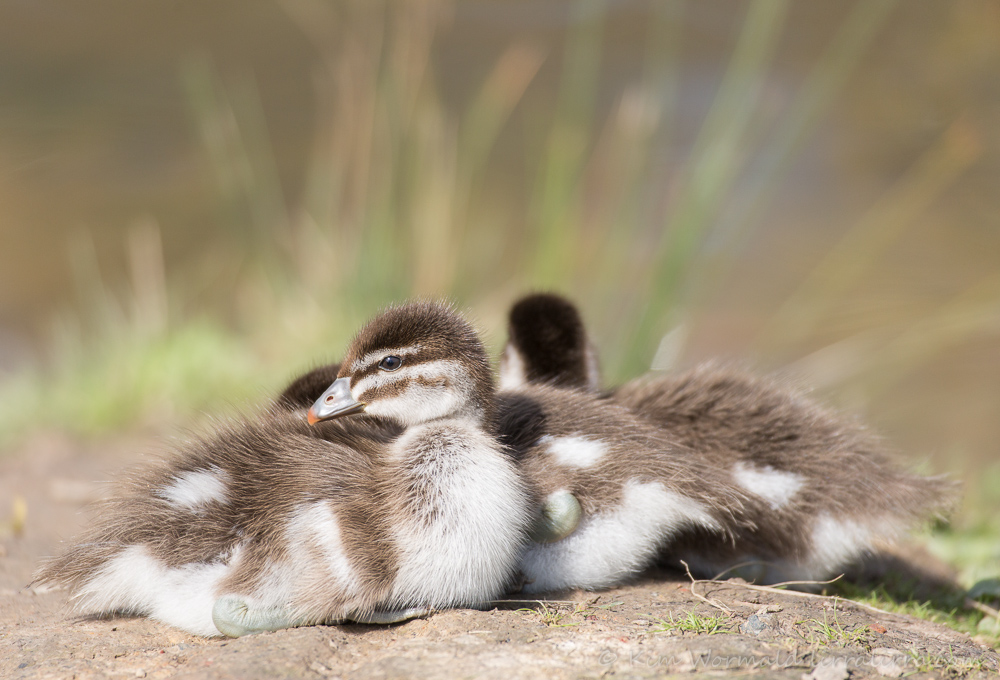 Australian Wood Duck (Chenonetta jubata)
Australian Wood Duck (Chenonetta jubata)
Canon 5DIII, 100-400mm L IS USM, 1/1000, f5.6, ISO 400, focal length 400mm
I was desperate for some birding time and headed out to a local pond to see if anything was about; these ducklings made me smile though I’m concerned for their safety as wood ducks generally have 8 to 10 ducklings and it’s unusual to see such a small clutch. I think the background reeds in the image above look like a little sunburst.
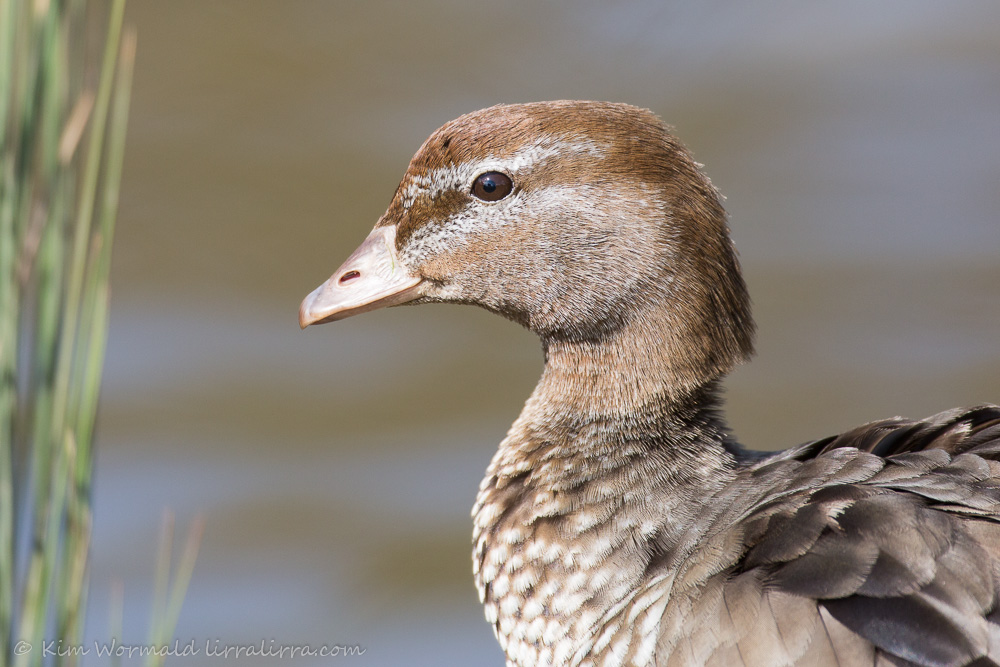 Australian Wood Duck (female)
Australian Wood Duck (female)
Canon 5DIII, 100-400mm L IS USM, 1/1000, f5.6, ISO 400, focal length 400mm
I didn’t have my waterproof gear with me so took off my sleeveless Drizabone vest to lean on and I wished it was a lot bigger as the sloping bank was wet and I needed to get as low as possible to throw the backgrounds out of focus. I crept slowly closer to the ducks making sure they were not uncomfortable with my presence at any time. I was rapt when the parents happily ignored me and yet kept an eye on passersby who were much further away. Female Australian Wood Ducks, as pictured above, have pale heads with a white stripe above and below their eyes.
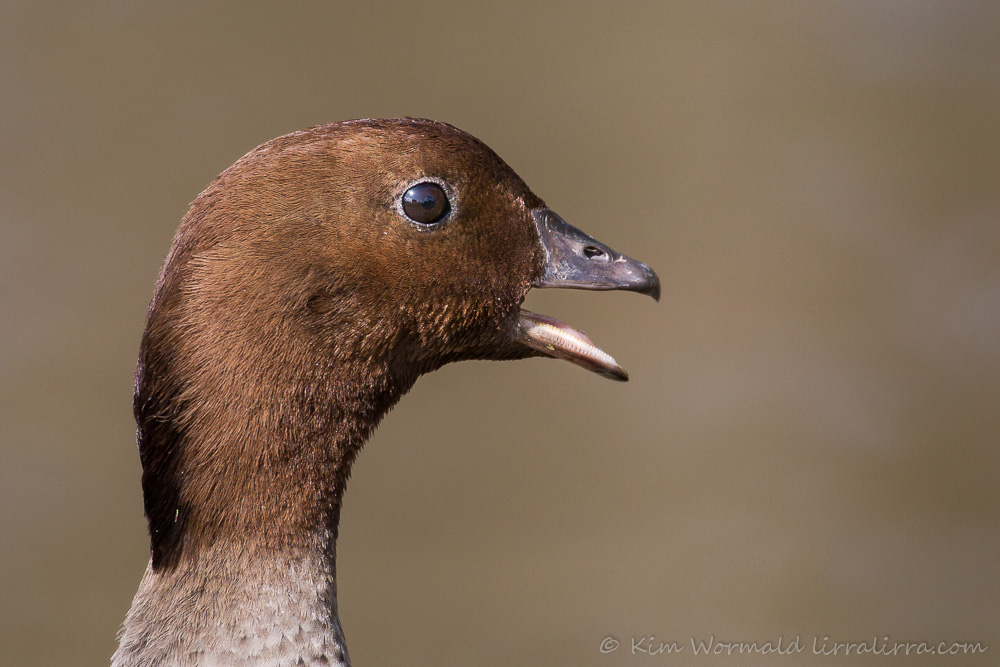 Australian Wood Duck (male)
Australian Wood Duck (male)
Canon 5DIII, 100-400mm L IS USM, 1/1250, f5.6, ISO 400, focal length 400mm
The male duck was alarmed by a distant cyclist and hurried his small family to the safety of the water. The males have significantly darker heads and a dark mane at the back of their necks. The species is also called the Maned Duck or Maned Goose. The serrations inside of his mouth help to grip and tear grasses when they are grazing.
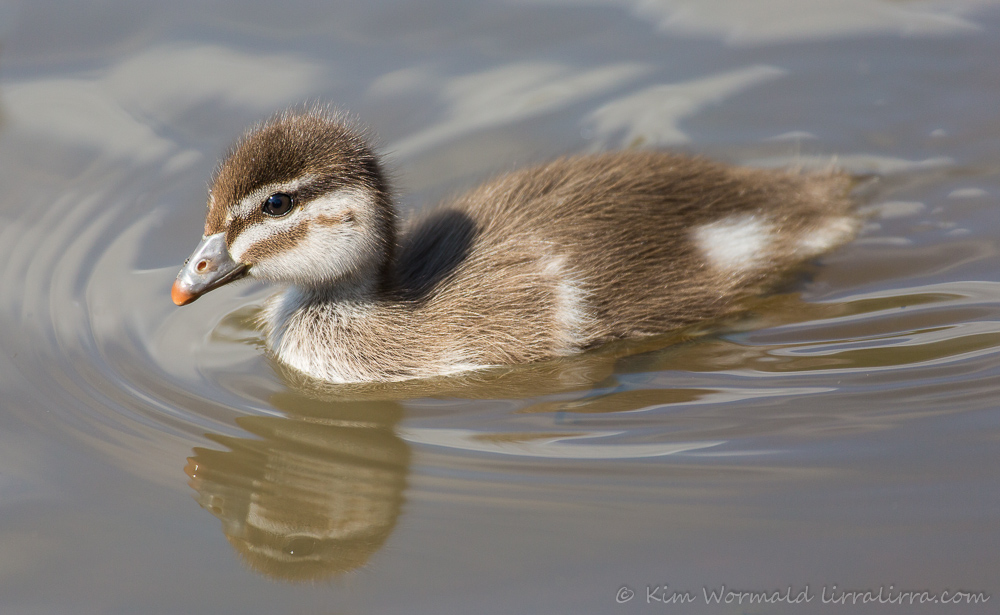 Australian Wood Duck
Australian Wood Duck
Canon 5DIII, 100-400mm L IS USM, 1/1000, f5.6, ISO 400, focal length 400mm
“That’s it,” I thought, as they swam towards to a quieter part of the park but they turned around and headed back with the soft clouds reflected in the ripples around them.
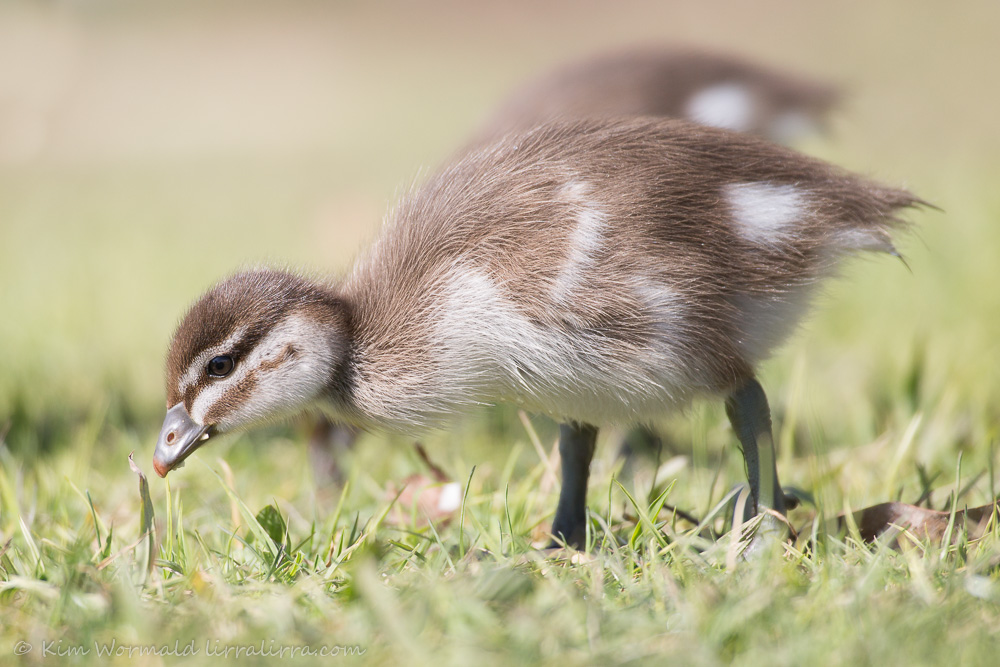 Australian Wood Duck
Australian Wood Duck
Canon 5DIII, 100-400mm L IS USM, 1/1000, f5.6, ISO 400, focal length 400mm
They waddled up the bank and worked their way towards me as they continued grazing. Australian Wood Ducks eat predominantly grasses and clover along with the occasional insect.
 Australian Wood Duck
Australian Wood Duck
Canon 5DIII, 100-400mm L IS USM, 1/1250, f5.6, ISO 400, focal length 400mm
It’s interesting to think how independent many creatures are compared to human babies. Shortly after hatching these ducklings could walk, swim, preen themselves and forage while their parents focused on trying to keep them safe, which isn’t easy in a world that now includes foxes, dogs and cats.
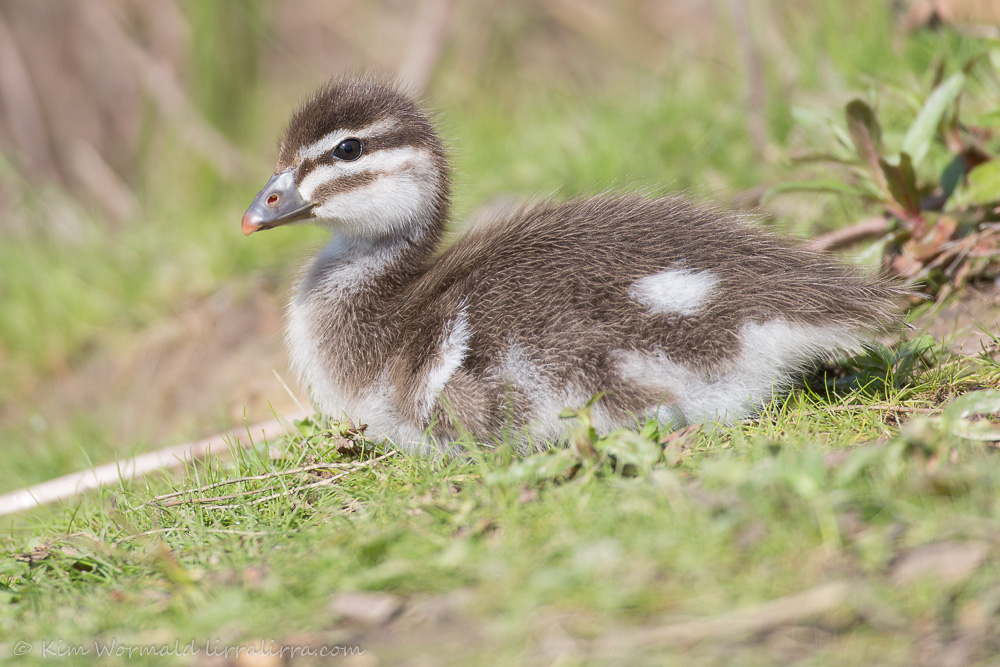 Australian Wood Duck
Australian Wood Duck
Canon 5DIII, 100-400mm L IS USM, 1/1250, f5.6, ISO 400, focal length 400mm
Their disruptive markings make them difficult to see when they stay still, they will gradually lose the bright colour of their bill tips as they mature. The duckling above is easier to see in the image than it was in real life as I’ve used a shallow depth of field to blur the foreground and background while the duckling stays sharp.
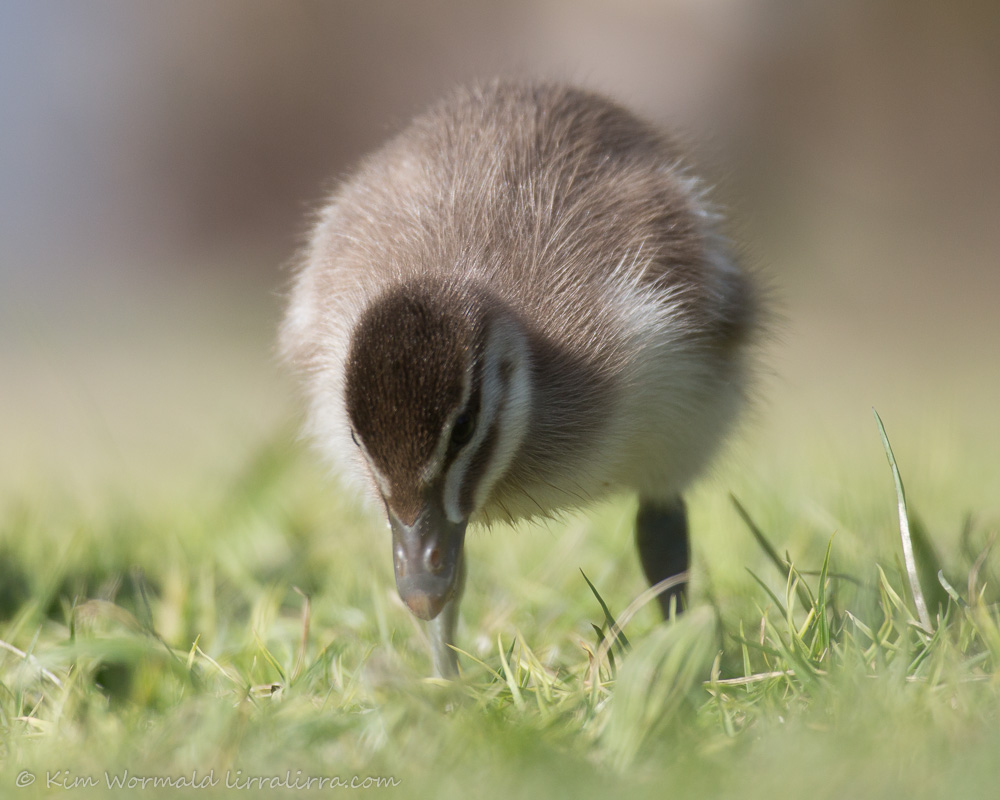 Australian Wood Duck
Australian Wood Duck
Canon 5DIII, 100-400mm L IS USM, 1/1250, f5.6, ISO 400, focal length 400mm
The soft colours in the image above complement the softness of the duckling’s feathers. Although this image would be better if the duckling’s head was turned a little more and there was a catchlight in its eye it is one of my favourites; it’s not every day that birds work their way towards you with such trust. I always feel blessed by nature at moments like this. And, just in case you didn’t know, Drizabones aren’t waterproof.
Happy birding, Kim
~ Thank you for your visit and comments.
~ If you’d like to receive a weekly email informing you that lirralirra has been updated please add your email address to the ‘subscribe’ box above right

Oh, these baby ducks are so cute. I often have the company of ducks when I feed Tanya’s horses, as they come for the grain that the horses drop around the feeding tub. I love watching their behaviour, always alert of course but have a good degree of confidence as they have learnt over the years that we do not harm them. I loved the detail of the serrations,not often we would see that with such clarity.
How lovely to spend time with ducks Margot, they always make me smile. In an earlier post about cygnets there was an image of their serations, fascinating. So much to learn.
Great photos again Kim. We are in Philadelphia visiting our daughter and I have introduced 2 of her bird loving neighbours to your web site. They love it.
Hi Valda, I hope you’re having a great time in the US, and a big lirralirra welcome to your daughter’s neighbours 🙂
How lovely even these ‘common” birds are. I love the orange tip on the bill of the babies. Top class as usual!
Thank you Jenny. I didn’t know about the babies’ orange bills until seeing these little ducklings, there always seems to be something new to learn. I agree about the ‘common’ birds.
Just looking at these pictures lowered my stress level! So cute and peaceful!
That’s awesome Stephanie. Your comment reminds me of my reply to EC that maybe ducklings remind us of magical moments of childhood.
OMG those are fabulous and definitely worth any dirt and mud!
Thank you Sherry! I’m glad we finally got a washing machine that can cope.
Joy and bliss. I suspect they made your day – as you have mine. Thankyou.
There is something beautifully peaceful about ducklings isn’t there, maybe they take us back to magical moments during childhood.
Beautiful page and photos. The ducklings are very cute.
Thanks for your comment Kimbolina!
The duckling that’s preening looks so fluffy! Lovely photos of the baby ducks 😉
I’m glad you enjoyed the photographs of the baby ducks 🙂